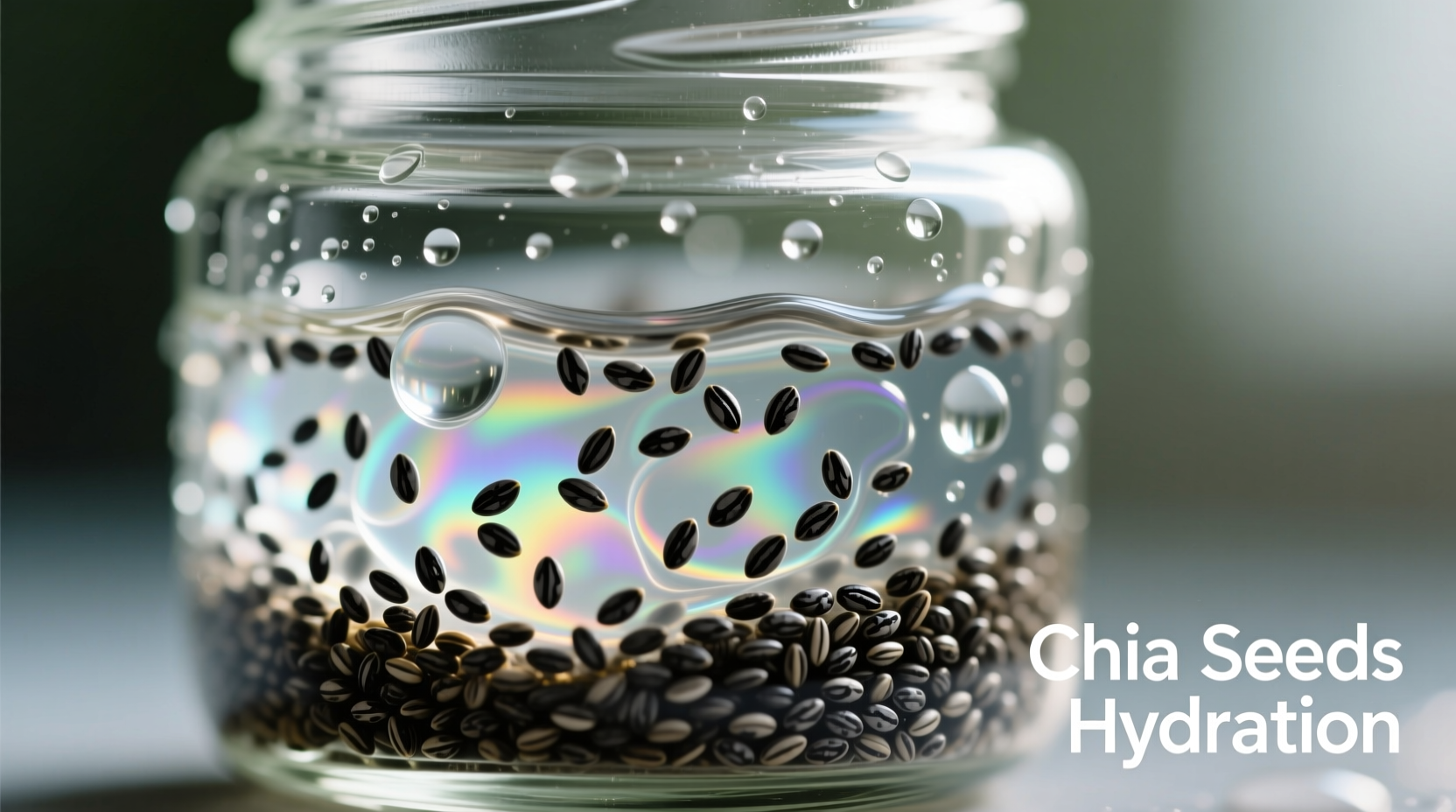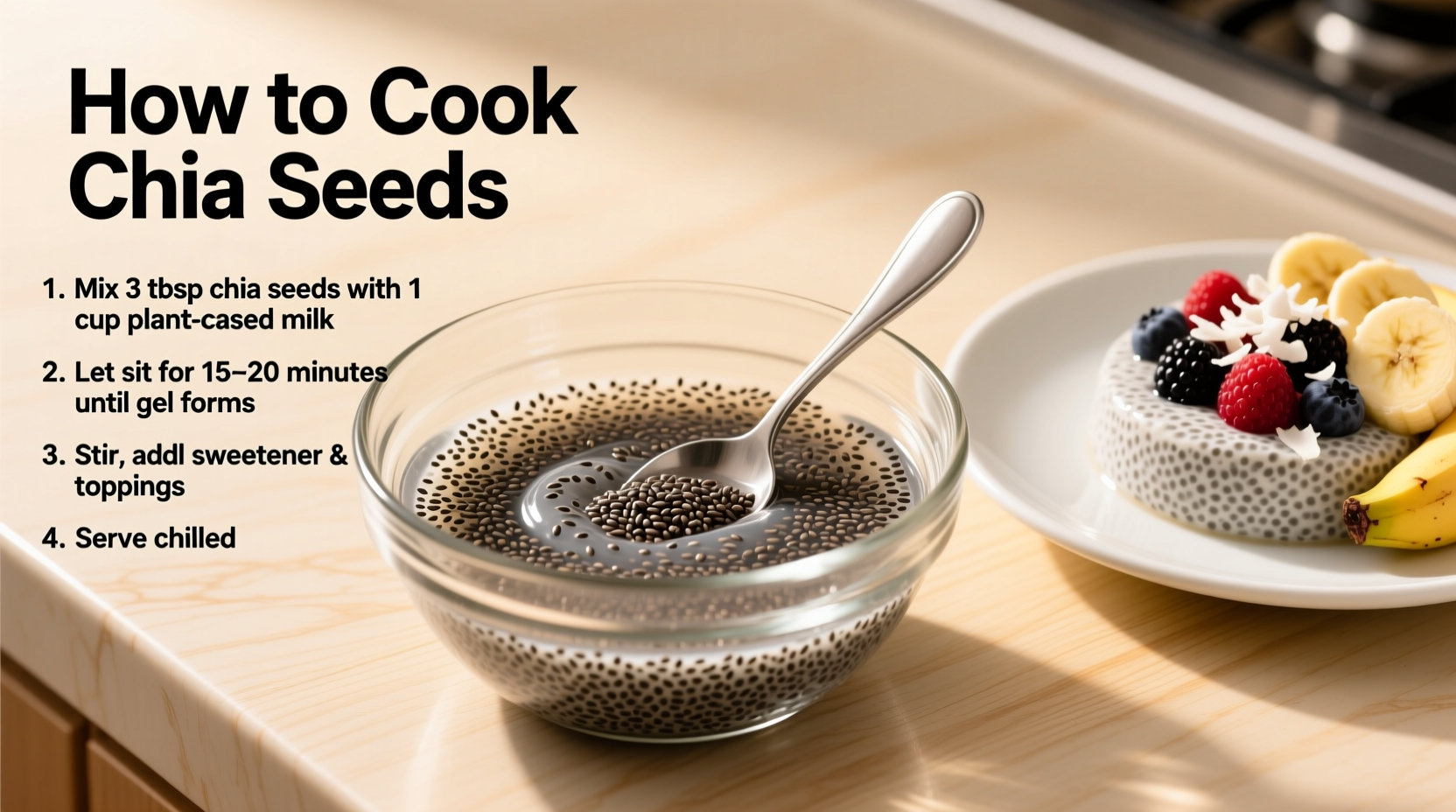Learn exactly how to cook chia seeds properly: soak 1 part chia seeds in 4-6 parts liquid for 15-30 minutes to create chia gel, or simmer in liquid for 10-15 minutes for thicker textures. Proper preparation maximizes nutrient absorption while creating the perfect texture for puddings, baked goods, and breakfast bowls.
Chia seeds transform from tiny dry beads into nutrient-packed powerhouses with the right preparation. Whether you're making breakfast pudding, thickening soups, or adding texture to baked goods, knowing how to cook chia seeds properly makes all the difference in both nutrition and texture. This guide reveals professional techniques that home cooks can easily master.
Why Proper Chia Seed Preparation Matters
Raw chia seeds have limited nutritional availability. When prepared correctly, chia seeds release up to 90% more omega-3 fatty acids according to research from the National Institutes of Health. The mucilage layer surrounding each seed must be properly hydrated to unlock these nutrients while preventing potential digestive discomfort.
Your Step-by-Step Chia Seed Cooking Guide
Method 1: The Basic Chia Gel (Perfect for Smoothies and Drinks)
This foundational technique creates the versatile chia gel used across countless recipes:
- Measure 1 part chia seeds to 4 parts liquid (water, milk, or juice)
- Pour liquid into container first, then slowly sprinkle chia seeds while stirring
- Stir continuously for 2 minutes to prevent clumping
- Cover and refrigerate for 15-30 minutes, stirring once at the 10-minute mark
- Check consistency - properly prepared gel should be uniformly thick with no dry seeds
| Preparation Time | Texture Result | Best Uses |
|---|---|---|
| 5 minutes | Thin, slightly grainy | Smoothies, salad dressings |
| 15 minutes | Medium thickness, slight seeds visible | Yogurt toppings, oatmeal mix-ins |
| 30 minutes | Thick, uniform gel | Puddings, egg substitutes |
| 2 hours+ | Very thick, spoonable | Dessert bases, pie fillings |
Method 2: Simmered Chia Seeds (For Thicker Applications)
When you need extra thickness for sauces or baked goods:
- Combine 1 cup liquid with 3 tablespoons chia seeds in saucepan
- Bring to gentle simmer over medium heat
- Reduce heat to low and cook 10-15 minutes, stirring constantly
- Remove from heat and let cool - mixture will thicken further
- Use immediately or store in refrigerator for up to 5 days
This cooking method creates a more concentrated thickener ideal for gravies, fruit compotes, or as an egg replacement in vegan baking. The gentle heat helps release additional soluble fiber while maintaining most nutritional benefits.

Avoid These Common Chia Seed Mistakes
Professional chefs consistently avoid these preparation errors that compromise both nutrition and texture:
Mistake 1: Adding Seeds to Liquid All at Once
When dumped directly into liquid, chia seeds immediately form an impenetrable gel barrier around dry seeds inside. The solution: always sprinkle seeds slowly while whisking vigorously to ensure even hydration.
Mistake 2: Ignoring Temperature Effects
Cold liquids require longer soaking times. For refrigerator-cold milk, extend soaking time by 50%. Room temperature liquids achieve proper gel formation in standard timeframes. This temperature dependency follows predictable patterns documented by food scientists at the USDA.
Mistake 3: Using Improper Ratios
The perfect ratio depends on your application:
- 3:1 liquid to chia for breakfast puddings
- 4:1 for smoothie thickeners
- 6:1 for drinking gels
- 2:1 for baking binders
Pro Tips for Maximum Flavor and Nutrition
Unlock chia seeds' full potential with these professional techniques:
Acidic Liquid Enhancement
Adding lemon juice or apple cider vinegar to your soaking liquid (about 1 teaspoon per cup) helps break down phytic acid, improving mineral absorption. This technique, recommended by nutrition researchers at Harvard T.H. Chan School of Public Health, makes calcium and magnesium more bioavailable.
Temperature Control for Optimal Nutrition
While simmering creates thicker textures, it reduces certain heat-sensitive nutrients. For maximum omega-3 retention, stick with cold soaking methods. When heat is necessary, keep temperatures below 160°F (71°C) and cooking time under 15 minutes to preserve nutritional integrity.
Three Simple Recipe Applications
Overnight Chia Breakfast Pudding
Combine 3 tablespoons chia seeds with 1 cup almond milk, 1 teaspoon vanilla extract, and 1 tablespoon maple syrup. Refrigerate overnight. In the morning, top with fresh berries and a sprinkle of nuts for a complete breakfast rich in protein, fiber, and omega-3s.
Chia Seed Thickener for Soups and Sauces
Replace cornstarch with chia gel for a nutrient-dense thickener. Use 2 tablespoons chia gel per cup of liquid you want to thicken. Add during the last 5 minutes of cooking while stirring constantly. This method adds soluble fiber without altering flavor.
Chia Seed Egg Replacement
Mix 1 tablespoon chia seeds with 3 tablespoons water, let sit 15 minutes until gel forms. Use in place of one egg in baking recipes. This works particularly well in denser baked goods like muffins, brownies, and quick breads.
Storage Guidelines for Prepared Chia Seeds
Proper storage maintains both safety and quality:
- Refrigerate prepared chia gel for up to 5 days in airtight container
- Freeze chia gel in ice cube trays for longer storage (up to 3 months)
- Never leave prepared chia seeds at room temperature more than 2 hours
- Always use clean utensils when handling stored chia preparations
When stored properly, chia gel maintains its nutritional profile while developing slightly more complex flavor notes over the first 48 hours - a phenomenon food scientists call "controlled enzymatic development."











 浙公网安备
33010002000092号
浙公网安备
33010002000092号 浙B2-20120091-4
浙B2-20120091-4